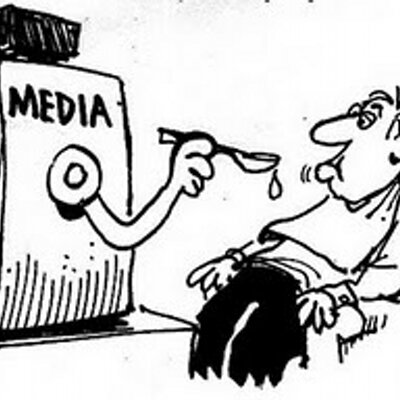THEORIES AND APPROACHES TO ‘AUDIENCE’
1. ‘Hypodermic Needle’ Theory
After the end of WWII, social science researchers began to investigate the way in which communication – and particularly, political communication – was used to disseminate propaganda. As such, from the end of the 1940’s and into the 1950’s, there was not only an expansion of new media forms, for example, the number of TV licences shot up from 763,000 in 1951 to 3.2 million in 1954 (How the Coronation kick-started the love of television), but, there was also an expansion of research into the effects of television. Many of which are now found on the specifications of media studies courses.
1. Hypodermic model (passive consumption)

Early theoretical work on the relationship (or effects) of media consumption are often traced back to Harold Lasswell, who developed the theoretical tool of ‘content analysis’ and in 1927 wrote Propaganda Technique in the World War which highlighted the brew of ‘subtle poison, which industrious men injected into the veins of a staggering people until the smashing powers . . . knocked them into submission’ (link). As Martin Moore notes, Lasswell, as a behavioural scientist researching areas connected with political communication and propaganda, believed each government had ‘manipulated the mass media in order to justify its actions’ in World War 1 (2019:122).
To illustrate his hypothesis, in 1948 he developed a linear model of communication, one that breaks down the line of communication from point A to point B, in which the SENDER is transferring a MESSAGE, through a MEDIUM (eg Print, radio, TV, etc) that has a direct effect on the RECEIVER.
Or to be correct: WHO, SAYS WHAT, THROUGH WHAT CHANNEL, TO WHOM, TO WHAT EFFECT.

In this sense, this is a HYPODERMIC MODEL OF MEDIA EFFECT, in that the model proposes a clear, linear (and perhaps unaltered) connection between message sent > message received. This model has, as we shall highlight, been the subject of much analysis and review. However, the basic premise remains, that we need to understand what message is being sent, to who, how and to what (intended) effect. Further, that there is a clear relationship between sending a message and receiving a message.
This approach was later adapted by Shannon and Weaver in 1949, as the Transmission model of Communication, which included other elements, such as NOISE, ERROR, ENCODING and FEEDBACK. In other words, there is the suggestion that the process of sending and receiving a message is clear-cut, predicable or reliable and is dependent on a range of other factors that need to be taken into consideration.

